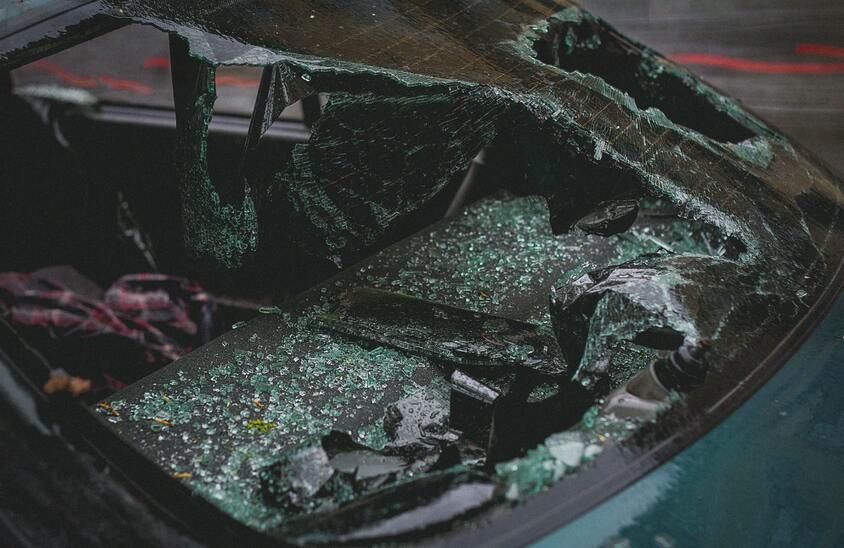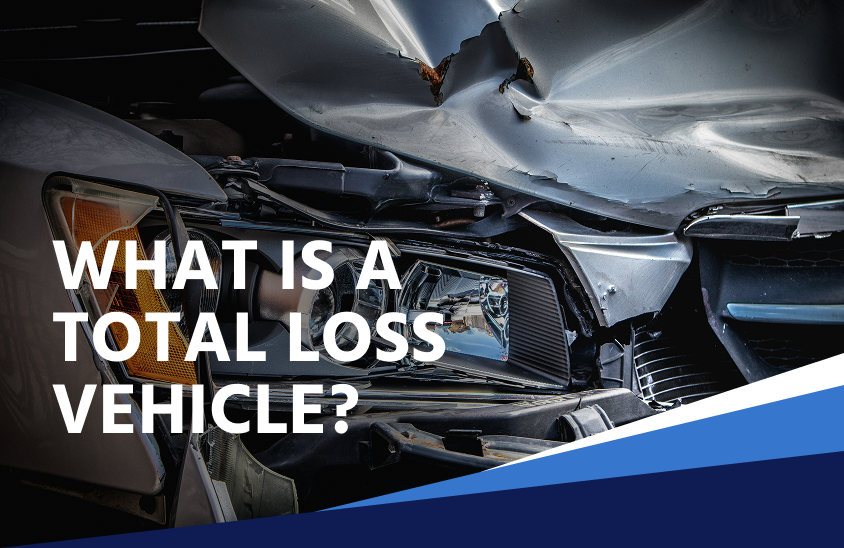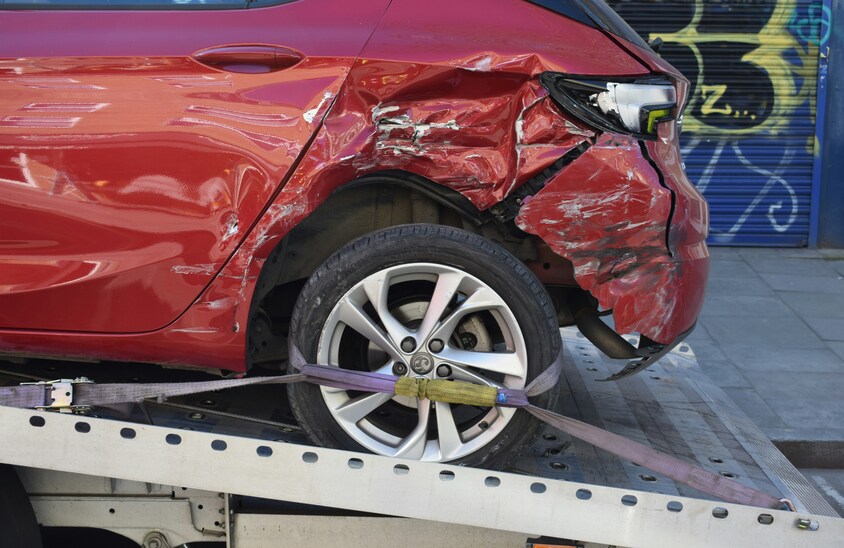Questions typically rush through your mind after a car accident. What happened? Am I at fault? Another challenging but critical question you might encounter is: What is a total loss vehicle? As you’ll soon learn, this question is one most drivers don’t want to hear. However, understanding what a totaled vehicle is—and what to do after someone or something totals your automobile—can help you save stress, time, and money.
Remember, vehicle collisions aren’t the only situations capable of totaling an automobile. A falling tree branch, flooding, or a fire can total your car. Understanding these scenarios is vital for anyone navigating total loss car insurance claims.
In this blog post, we’ll cover:
- What factors lead to a vehicle being a total loss
- How insurance companies calculate total losses
- The steps to take if your vehicle was deemed a total loss
- Extra tips to help you complete a total loss claim
What Factors Determine a Total Loss Vehicle?
In simple terms, a totaled automobile needs repairs that would cost more to repair than the automobile’s actual cash value (ACV). In the context of total loss car insurance policies, a vehicle may be deemed a total loss not only due to severe damage but also when the projected repair costs exceed a specific percentage of the vehicle’s actual cash value. This economic threshold is a critical factor in claim evaluations.
Repair Costs vs. A Vehicle’s Current Value
Let’s say you get into an accident while driving a 2018 Jeep Grand Cherokee. Your vehicle’s current ACV is $10,000. Because another driver hit you while speeding, your car sustains $11,000 worth of damage. In this case, you would have a totaled automobile.
However, while the cost of repairs against a vehicle’s ACV is vital, it’s not the only way to determine if a vehicle is totaled.
State Laws
You likely know that states have their own laws. However, you may not know that differing state laws can affect total loss car insurance determinations. For instance, Oklahoma considers vehicles to be total losses if their repair costs exceed 60% of an automobile’s ACV. However, in Texas, repair costs must exceed 100% of a vehicle’s ACV for it to be totaled.
A Vehicle’s Pre-Accident Condition
A vehicle’s age and condition can also play significant roles in totaling a vehicle. For example, older cars with worn parts and more wear are more likely to be totaled after moderate damage than a brand-new automobile.
How Much Will Insurance Companies Pay Out for Totaled Cars?
Most car insurance policies pay out based on the vehicle’s actual cash value (ACV) — that is, what your car was worth at the time of the accident. The original purchase price doesn’t factor in; instead, insurers consider the fair market value your vehicle could sell for immediately before the loss occurred.
Insurance companies calculate an automobile’s ACV based on a vehicle’s:
- Age
- Mileage
- Overall condition
- The market value of similar vehicles nearby
Also, insurers often make deductions based on an automobile’s prior damage, including condition issues. Because these deductions can add up quickly, pushing back against a low valuation is imperative.
Does taking these factors into consideration mean that insurance companies always provide accurate payouts? Unfortunately, no. It’s not uncommon for insurance carriers to undervalue vehicles. However, a way to resolve this problem is by obtaining a total loss appraisal from the auto industry experts at DVCHECK.
You Have a Total Loss Vehicle. What Comes Next?

Navigating a total loss claim can be challenging, especially if you’ve never been in this situation. Let DVCHECK walk you through the claims process.
Submit Your Claim
As you would after any accident, notify your insurance carrier of what happened and file a claim. The insurance company will provide its own valuation of your vehicle, but it often comes in lower than the actual fair market value.
Request a Professional Appraisal
To strengthen your total loss claim, consider hiring an independent appraiser to conduct your own total loss evaluation. A qualified appraiser can identify local market comparables that support a higher vehicle valuation, which may increase the insurance company’s offer.
If you invoke the appraisal clause, your appraiser and the insurer’s appraiser will work together to negotiate a fair settlement — a process that often results in significantly better compensation for the policyholder.
Bonus Tips for Navigating a Total Loss Claim

Don’t Accept the First Offer
Being without a vehicle is often trying. In this situation, people are sometimes over-eager to receive compensation from an insurance carrier. However, don’t be in a rush to accept their settlement offer. Before responding to your initial offer, take time or seek out help to assess its fairness.
Be Proactive
Don’t wait for an insurance carrier to reach out to you. Following up frequently might shorten the wait for your claim to be processed. Additionally, request that they provide you with a copy of their ACV valuation. These valuations often include errors, missing vehicle options, and comparable vehicles that are no longer for sale.
Invoke the Appraisal Clause
When dealing with a total loss vehicle, knowing your options is vital to securing a fair settlement. The appraisal clause process is found in most insurance policies and can protect you from having to settle for a low initial offer.
It’s a significant step that can affect any potential insurance payout and your peace of mind. Don’t go it alone. Get your total loss appraisal from DVCHECK today.







